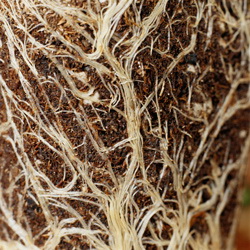Global diversity of symbiotic fungi
The EU-funded 'Global biodiversity of arbuscular mycorrhizal fungi: taxonomic and functional patterns' (Globam) project used molecular technologies to determine the distribution of Glomeromycota in plant roots. Glomeromycota are a group of fungi that form arbuscular mycorrhizal (AM) associations within the roots of plants. The fungi receive carbohydrates from their host while functioning as an extended root system, thereby dramatically improving mineral uptake by the plant roots. Project partners gathered samples from biodiversity hotspots around the world and used them to create a global database. Sampling locations included the Negev desert in Israel, tropical and temperate forests, savannah land and shrubland ecosystems in South Africa. Researchers also investigated the diversity of Glomeromycota in a Boreal forest in Estonia, which was already a well understood ecosystem. Data showed that all the field sites provided new species of Glomeromycota, thereby significantly increasing scientists’ knowledge of the fungi’s global diversity. Glomeromycota diversity was also assessed in the roots of invasive species of palm in its native habitat in China, as well as its invasive range in Switzerland and experimentally introduced localities across Europe. Results also demonstrated that soil-dwelling organisms such as Glomeromycota do show bio-geographic distribution patterns. Therefore, transporting soil and roots with pot plants, and inoculum (bio-fertilisers) could help distribute these fungi with unknown impacts on local diversity of soil organisms. The Glomeromycota database, known as MaarjAM brought together published DNA sequences and information concerning habitats and host plants, which facilitated the comparison of case studies (see http://maarjam.botany.ut.ee). Project partners found that the majority of Glomeromycota were limited according to climate zone and continent and that the fungi with the widest host range seem to be most widely distributed. The invasive palm species were mostly associating with fungal species that were habitat generalists rather than those occupying a highly specialised niche in the ecosystem. Researchers also used the latest DNA sequencing technology to investigate communities of Glomeromycota in a well researched boreal-forest field site in Estonia. The result was much greater amounts of data and a significant increase in the detected diversity of AM fungi. Additional studies regarding the effect of soil inoculums from differently managed forest stand and an arable field indicated that plant growth was dependent on the origin of the fungi in the soil inoculum. The number of fungal species colonising roots of different plant species were found to differ upon application of the same fungal inoculums. This result supported the findings from field conditions, which indicated selectivity between plant and fungus in the AM associations within plant roots. Globam’s success will contribute to the protection of European ecosystems by increasing scientists’ understanding of the role of symbiotic organisms in plant invasion. This will also help to ensure the long-term security of Europe’s unique biodiversity.

